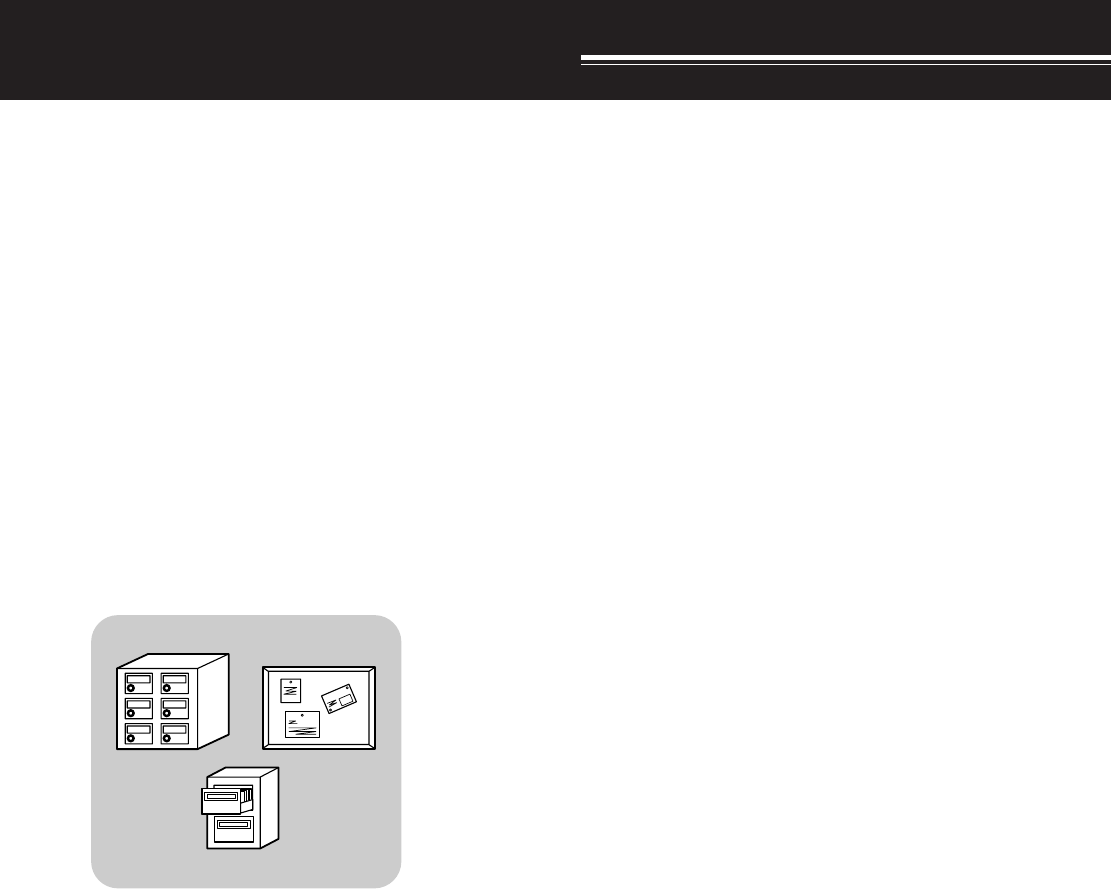
49
SPECIALIZED COMMUNICATIONS
PACKET RADIO
Packet is a unit of data transmitted as a whole from
one computer to another, on a network. Packets can
be transmitted on radio waves as well as on
communications lines. Besides a transceiver and a
computer, all you need is a terminal node controller
(TNC) or Multimode Communications Processor
(MCP). One of the tasks of TNCs and MCPs is to
convert data packets to audio tones, and vice versa.
This transceiver has a built-in TNC which allows you
to use basic (not full) packet applications.
A variety of packet applications developed by hams
include packet bulletin board systems (PBBSs).
PBBSs are created and maintained by volunteers
called System Operators (SysOp). You may access
one of your local PBBSs to send e-mail, download
files, or obtain various useful information. Thousands
of PBBSs, which have formed a worldwide network,
relay e-mail to their intended destinations around the
world.
When you access a local PBBS for the first time, you
often need to register as a new user. After you are
successfully registered, it will then be available as
your home PBBS. E-mail addressed to you will be
held under a directory, called a mailbox, on your
home PBBS.
To send e-mail, you must designate the address of a
recipient, using his or her call sign and the call sign of
his or her home PBBS; ex. KD6NUH@KJ6HC. In this
example, the e-mail is addressed to KD6NUH whose
home PBBS is KJ6HC. If your home PBBS cannot
find KJ6HC in its address file to forward your mail,
you must designate the address in more detail. You
may enter “KD6NUH@KJ6HC.#ABC.CA”, or
“KD6NUH@KJ6HC.#ABC.CA.USA”, or up to
“KD6NUH@KJ6HC.#ABC.CA.USA.NA”, as
necessary. The complete address of a recipient living
in the U.S.A., for example, should include an
appropriate region code (preceded by a #), state,
country, and continent abbreviations, as above.
For further information, consult reference books
which should be available at any store that handles
Amateur Radio equipment. Web pages relating to
Packet will also be helpful. On Internet search
engines, use “Packet Radio” as key words to find
those Web pages.
PBBS
Note:
◆
Unlike a TNC, a Multimode Communications Processor (MCP)
serves as a communications interface in several digital modes
such as Packet, RTTY, and AMTOR. You can cause it to switch
among the modes by sending a single command from your
computer.
◆
If there is an amateur radio club in your area, consider becoming
a member. You can often learn more in an hour from
experienced hobbyists, than in a month of independent research.
Ask on the local repeaters, or contact your national amateur radio
organization (the ARRL in the U.S.A.) for information on local
amateur radio clubs. You’ll be glad you did.
BUILT-IN TNC
This transceiver has a built-in TNC which conforms to
the AX.25 protocol. Since the built-in TNC has been
designed to work with the Packet Cluster Tune
{page 53} and Sky Commander II+ {page 83}
functions, some of the enhanced TNC commands
may not be available. For the commands supported
by the built-in TNC, consult “BUILT-IN TNC
COMMAND LIST” starting on page 110. The AX-25
protocol is used for communication between TNCs.
The TNC accepts data from your personal computer
and assembles it into packets. It then converts those
packets to audio tones which the transceiver can
transmit. The TNC also takes audio tones from the
transceiver, converts them to data for the computer,
and checks for errors in the data.
In order to activate the built-in TNC, access Menu
No. 55 and select ON. The default is OFF. “PKT”
will appear to show that the built-in TNC is ON.
The TNC mainly functions in Command or Converse
mode. First, you should learn the difference between
these two modes.
• Command mode
When you select Packet mode, the TNC enters
Command mode. A “cmd:” prompt appears on the
computer screen. You can type commands from
the computer keyboard to change the settings of
the TNC. When in Converse mode, press
[Ctrl]+[C] on the keyboard to return to Command
mode.
• Converse mode
The TNC enters this mode when a link with the
target station is established. On the computer
keyboard, type an appropriate command and a
message if necessary, then press [Enter] or
[Return]. What you type is converted into packets
and transmitted over the air. When in Command
mode, type CONVERSE, CONV, or K to enter
Converse mode.
Note: The built-in TNC automatically reinitiates when a malfunction
is detected; this does not designate that the transceiver is defective.


















